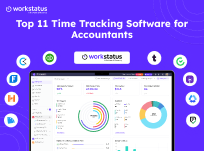Table of Contents
Introduction
Tick-tock, tick-tock – the clock never stops, and neither should your quest for optimal productivity.
Did you know?
The average worker is interrupted every 11 minutes, taking 23 minutes to regain focus fully.
These statistics highlight the constant battle against time that demands innovative solutions for effective time management.
But what if we tell you that the solution lies not in tedious routines but in the thrill of engaging in games?
Yes, you read that right!
Contrary to popular belief, games can be more than just a source of entertainment and relaxation.
They can also be powerful tools to boost your time management skills and help you achieve your goals efficiently.
This blog will introduce you to fun and stimulating games that can sharpen your time management skills.
These games provide a welcome escape from the monotonous daily grind and valuable lessons on prioritization, planning, and multitasking, which are essential in effective time management.
What is Effective Time Management?
Let’s Understand its impact on productivity
Time management is the process of planning, organizing, and controlling how one allocates their time to specific activities. It involves:
- Setting priorities
- Creating schedules
- Employing strategies to maximize the available time
Impact On Productivity
Effective time management is a cornerstone of heightened productivity.
When individuals manage their time efficiently, they can allocate appropriate time to essential tasks, reduce procrastination, and enhance focus.
This leads to the prompt completion of tasks, reducing stress and increasing overall efficiency.
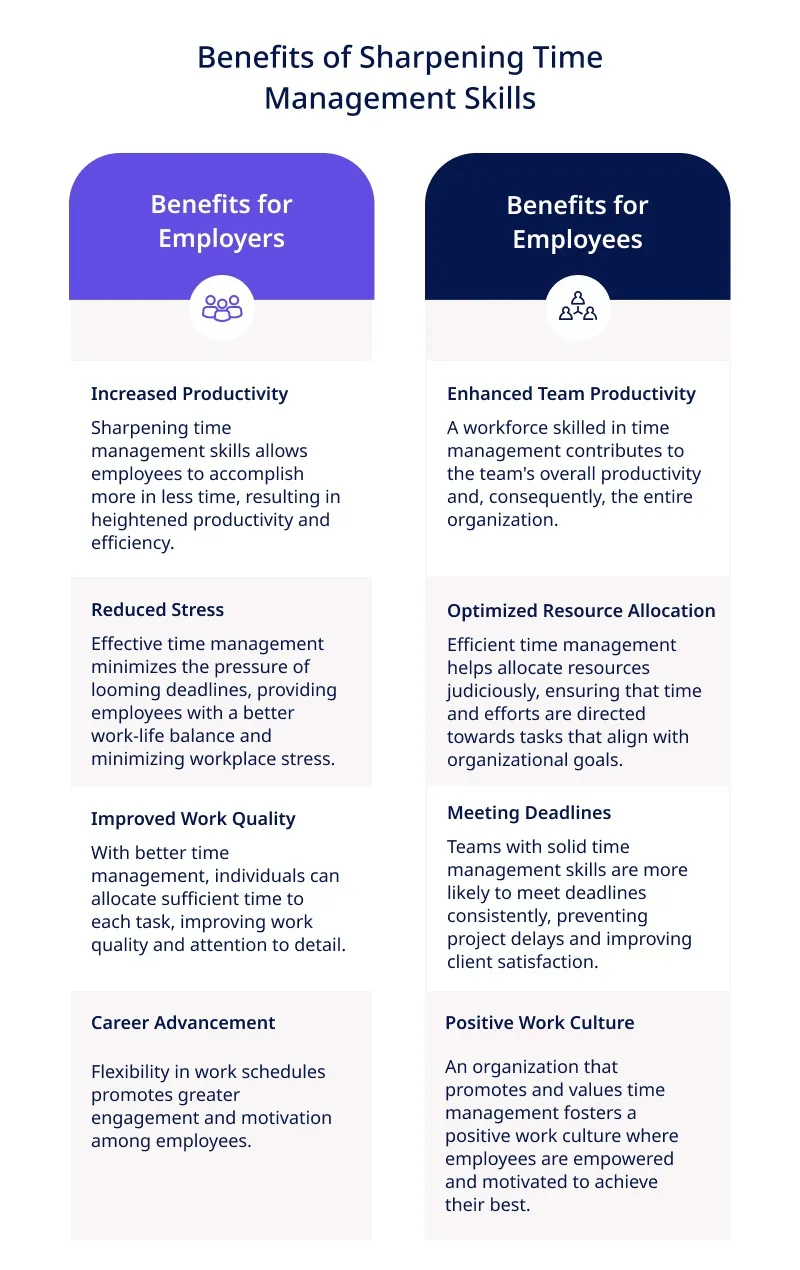
Role of Games in Time Management
Gamification has emerged as a powerful learning strategy for time management, seamlessly blending the thrill of games with the practicality of productivity.
Here’s a closer look at why gamification is becoming a game-changer in the realm of time management:
1. Employee Enjoyment
According to recent statistics, 95% of employees enjoy gaming-inspired elements integrated into their work environment.
This suggests a strong affinity towards incorporating game dynamics to make tasks more engaging and enjoyable.
2. Market Growth
The gamification market is on an upward trajectory and is projected to grow at an impressive compound annual growth rate (CAGR) of 30.1% by 2024.
By 2025, the estimated sales revenue is poised to reach a remarkable $32 billion.
These statistics underscore the widespread recognition of the effectiveness of gamification as a strategy for enhancing various skills, including time management.
3. Intrinsic Motivation
Games have an inherent ability to tap into intrinsic motivation.
When applied to time management, gamification creates a sense of challenge and achievement, motivating individuals to improve their efficiency willingly.
4. Skill Transfer
Gamification facilitates the transfer of skills from the gaming environment to real-world scenarios.
This means that the time management skills honed during a game can seamlessly translate into enhanced productivity in the professional setting.
5. Adaptability and Customization
Games offer a flexible and customizable approach to learning.
Time management games can be tailored to address specific challenges within an organization, ensuring that employees acquire skills relevant to their roles.
Psychology of Gamification and Engagement
Understanding the psychological underpinnings of gamification is essential to grasp why it’s such a potent tool for enhancing time management skills:
1. Employee Engagement Boost
Statistics reveal that a gamified work experience can lead to an impressive average increase of 48% in employee engagement.
This statistic underscores the profound effect that integrating game elements into the work environment can have on the psychological state of employees.
2. Intrinsic Motivation
At the core of gamification is the principle of intrinsic motivation. Games tap into individuals’ desires for achievement, recognition, and mastery.
When applied to time management, this inherent motivation drives employees to manage their time better proactively.
3. Sense Of Achievement
Games provide a structured environment where individuals can experience a sense of achievement through completing tasks and overcoming challenges.
When applied to time management, this sense of achievement translates into the satisfaction of meeting deadlines and accomplishing goals.
4. Competition and Collaboration
The gamified approach introduces healthy competition or collaboration, fostering a sense of camaraderie among employees.
This social aspect enhances engagement by creating an interactive and dynamic work environment.
How Games Make Time Management Training Enjoyable?
1. Incorporating Gamification Elements
By integrating gamification elements into time management training, such as points, rewards, and levels, participants can experience a sense of achievement and progression.
This can make learning more enjoyable and engaging as individuals strive to reach new milestones and unlock virtual rewards.
2. Creating Competitive Challenges
Introducing friendly competition can add an exciting element to time management training.
Games involving challenges and competitions among participants can motivate them to improve their time management skills to outperform others.
Leaderboards and rewards for top performers can further enhance the competitive aspect and drive engagement.
3. Provide Immediate Feedback
Games can offer instant feedback on participants’ time management performance.
Immediate feedback helps individuals understand the consequences of their decisions and allows for quick adjustments.
This iterative process of learning and adapting can be more enjoyable than traditional training methods, as users can see the direct impact of their actions in the game environment.
Engaging Games to Play with Employees
Game 1: Time Tracking Challenge
Objective
The primary objective of the Time Tracking Challenge is to enhance participants’ ability to track and manage their time accurately.
By incorporating elements of competition and rewards, the game encourages employees to develop a keen awareness of allocating their time throughout the workday.
Game Mechanics:
1. Setup
- Participants are introduced to the game and its rules, emphasizing the importance of accurate time tracking.
- Each participant can access Workstatus, a comprehensive time-tracking and productivity management tool.
2. Goal Setting
Employees set personalized time-tracking goals based on their daily tasks.
For instance, they completed a specific project phase within a defined timeframe or minimize the time spent on non-essential activities.
3. Individual or Team-based
The challenge can be structured individually, encouraging personal responsibility, or as a team competition, fostering collaboration and shared accountability.
4. Points and Rewards
- Participants earn points or rewards for achieving their time-tracking goals. This can be a tiered system, with higher rewards for more challenging goals.
- Rewards can be intrinsic (recognition, certificates) and extrinsic (gift cards, bonus incentives), adding an extra layer of motivation.
5. Progression Levels
The challenge can be structured with levels or milestones to maintain ongoing engagement. As participants achieve one set of goals, they unlock new challenges, ensuring a continuous learning curve.
How Workstatus Enhances the Game?
![]()
1. Real-time Monitoring
Workstatus provides real-time monitoring capabilities, allowing participants to observe and adjust their time-tracking strategies.
2. Automated Time Tracking
Workstatus automates the time-tracking process, reducing the risk of human error and providing more accurate data for participants to analyze.
3. Goal Setting and Reporting
Workstatus facilitates the seamless setting of time-related goals and generates comprehensive reports that participants can use to evaluate their progress and
achievements.
Game 2: Task Prioritization Race
Objective
The Task Prioritization Race has a clear objective: to enhance participants’ ability to prioritize tasks effectively.
Participants are immersed in a race against time, where the goal is to swiftly and accurately sequence tasks based on urgency, importance, and deadlines.
Game Mechanics:
1. Setup
- Participants are introduced to the rules of the game and the importance of effective task prioritization in a real-world context.
- Each participant can access Workstatus Task Management, an intuitive platform to streamline task organization and collaboration.
2. Task Sorting Challenge
- The heart of the game lies in the task sorting challenge. Participants are presented with various tasks, each with different urgency and importance levels.
- The challenge is for participants to prioritize and sequence these tasks within a predetermined time frame.
3. Scoring System
A scoring system is established to quantify participants’ success in the game.
Points can be assigned based on factors such as meeting deadlines, accurately identifying high-priority tasks and overall precision in prioritization.
4. Individual or Team-based
The game structure can be tailored to individual participants or teams, encouraging personal accountability and collaborative decision-making.
This flexibility accommodates different organizational structures and preferences.
5. Time Constraints
To simulate real-world scenarios and add an element of urgency, participants are constrained by a limited time to complete the task prioritization challenge.
How Workstatus Task Management Enhances the Game?
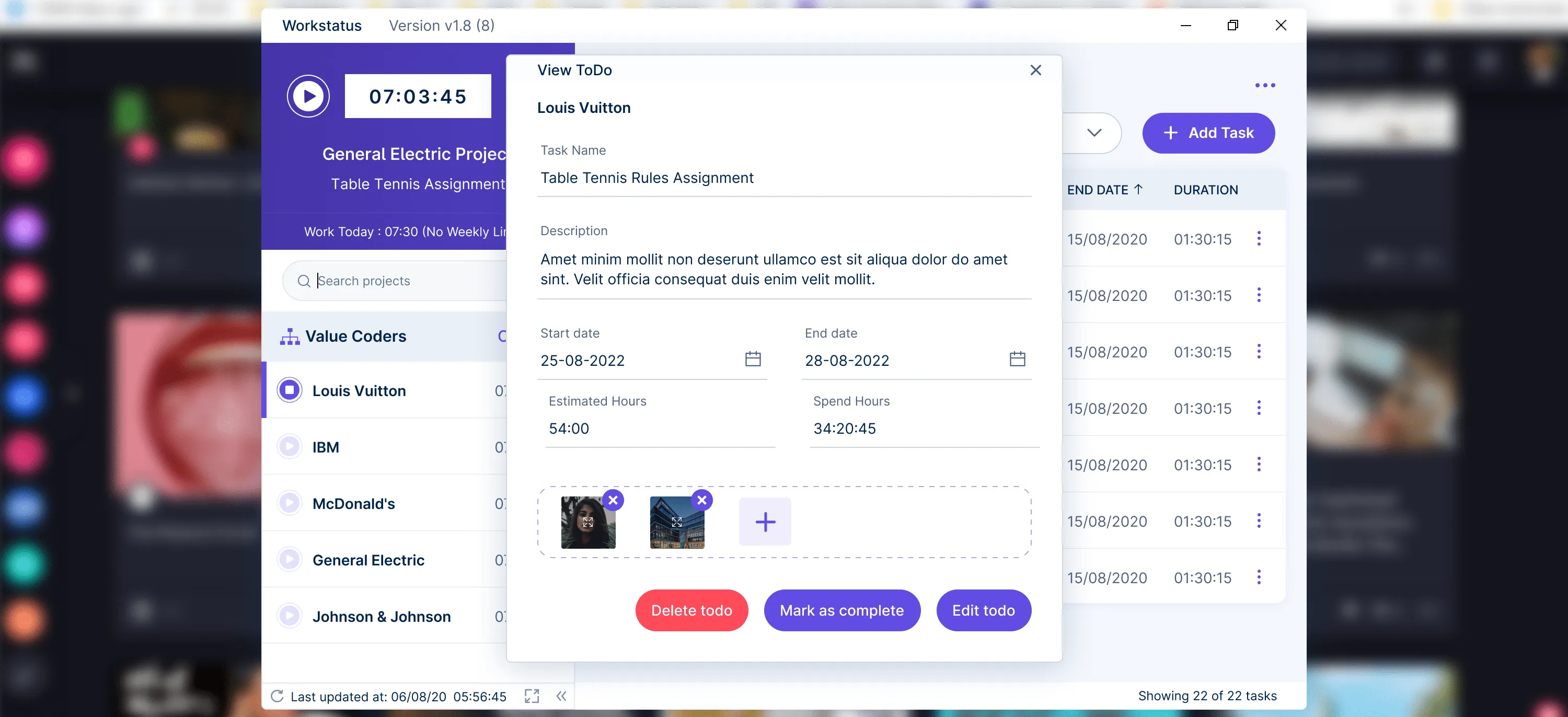
1. Task Visibility
Workstatus Task Management provides participants a centralized platform to view and organize their tasks.
This visibility ensures that everyone works with the same information set, promoting consistency and fairness in the game.
2. Real-time Updates
The real-time updates offered by Workstatus ensure that participants can instantly see changes made by others.
This dynamic feature adds an element of competition to the race, creating a lively and engaging environment.
3. Task Dependencies
Workstatus allows participants to explore task dependencies, offering insights into how prioritization decisions can impact project timelines.
This adds a layer of complexity to the game, mirroring the challenges often faced in professional settings.
4. Analytics and Insights
Post-game, Workstatus provides analytics and insights into task completion times and prioritization accuracy.
This data is valuable for participants to reflect on their performance and strategize for continuous improvement.
Game 3: Productivity Sprint
Objective:
The core objective of the Productivity Sprint is to cultivate heightened focus and productivity by challenging participants to achieve specific metrics within allocated timeframes.
This game instills a sense of urgency, encouraging participants to optimize their time effectively.
Game Mechanics:
1. Setup
- Participants are introduced to the rules and objectives of the Productivity Sprint, emphasizing the importance of concentrated efforts within defined sprints.
- Each participant can access Workstatus, a comprehensive workforce productivity and monitoring tool.
2. Sprint Challenges
- The game unfolds through a series of sprint challenges, each having a predetermined timeframe (e.g., 30 minutes, 1 hour).
- During each sprint, participants focus exclusively on assigned tasks, striving to maximize productivity within time constraints.
3. Definition
Clear and measurable productivity metrics are established for each participant or team.
These metrics could include the number of tasks completed, the quality of work, or specific project milestones achieved.
4. Scoring System
- Task Completion Rate
Points are awarded based on the percentage of tasks completed within each sprint. This metric emphasizes the importance of task accomplishment during focused work periods.
- Quality of Work
Participants receive points for maintaining a high standard of work. Quality metrics can be defined based on project requirements or specific task criteria, encouraging participants to prioritize excellence.
- Consistency Bonus
Bonus points are allocated for participants who consistently meet or exceed productivity metrics across multiple sprints. This element encourages sustained effort and continuous performance improvement.
- Collaboration Points (Team-based)
In team-based settings, additional points can be awarded for collaborative achievements. This approach fosters teamwork, mutual support, and the achievement of collective goals.
5. Individual or Team-based
The game accommodates individual and team structures, promoting personal accountability and collaborative efforts to achieve shared productivity goals.
How Workstatus Enhances the Experience?
1. Productivity Analytics
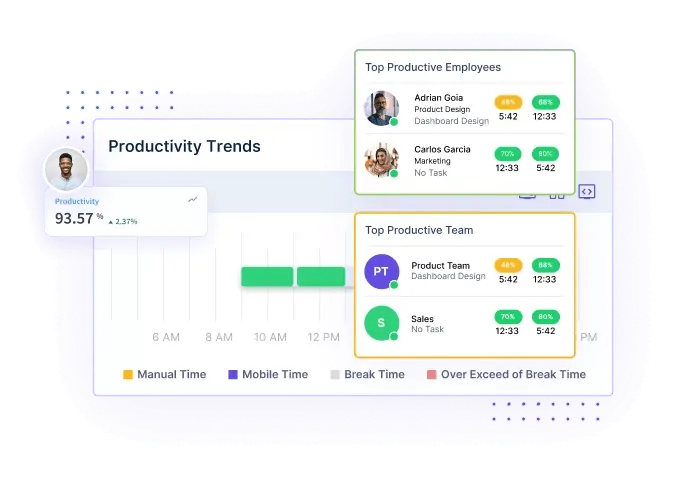
Workstatus furnishes detailed productivity analytics, offering comprehensive individual and team performance insights.
Participants can analyze productivity trends over time, identify strengths and weaknesses, and formulate strategies for continuous improvement.
2. Real-Time Screenshots
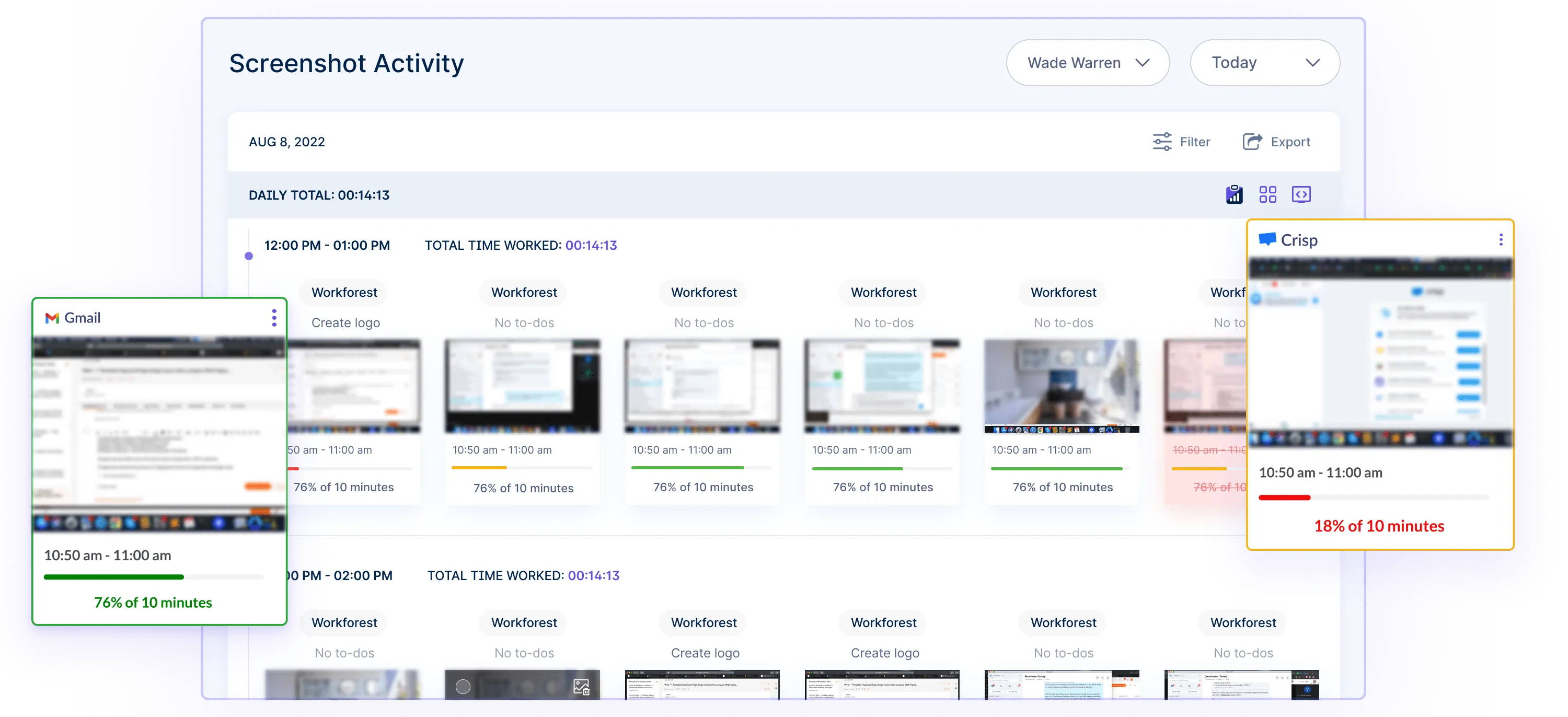
Workstatus captures real-time screenshots during each sprint, visually representing participants’ work activities.
This feature enhances transparency and accountability, allowing participants and managers to review and analyze work patterns.
3. Activity Tracking (URL and App)
![]()
Workstatus diligently tracks website URLs and application usage during each sprint.
This tracking mechanism provides a granular understanding of where participants allocate their time, enabling informed adjustments for improved focus and efficiency.
4. Inactivity Alerts
Workstatus can generate inactivity alerts, notifying participants when there is a noticeable lack of activity during the sprint.
This feature gives a gentle nudge, encouraging continuous engagement and discouraging potential distractions.
Game 4: Goal-Setting Quest
Objective:
The primary objective of the Goal-Setting Quest is to encourage participants to set and achieve time-bound goals.
By integrating a gamified approach, this quest aims to make the goal-setting process enjoyable, collaborative, and result-driven.
Game Mechanics:
1. Setup
- Participants are introduced to the rules and objectives of the Goal-Setting Quest, emphasising the significance of time-bound goals in personal and professional development.
- Each participant gains access to a goal-setting platform or tool, fostering a structured approach to goal management.
2. Quest Challenges
The game unfolds through a series of quest challenges, each focusing on a specific aspect of goal-setting.
Challenges could include defining SMART goals, breaking down goals into actionable steps, and establishing realistic timelines.
3. Individual or Team-based
Participants can engage in the quest as individuals or as part of a team. This structure promotes both personal accountability and collaborative goal achievement.
4. Scoring System
- Task Completion Efficiency
Points are awarded for efficiently completing tasks associated with goal achievement. This metric emphasizes setting goals and executing the necessary steps to reach them.
- Deadline Adherence
Participants receive points for adhering to established deadlines. Timely completion of tasks contributes to the overall success of the goal-setting quest.
- Collaboration Bonus (Team-based)
In team-based settings, bonus points are allocated for collaborative efforts that contribute to achieving team goals. This reinforces the importance of teamwork in goal attainment.
How Workstatus Enhances the Game:
1. Goal Tracking
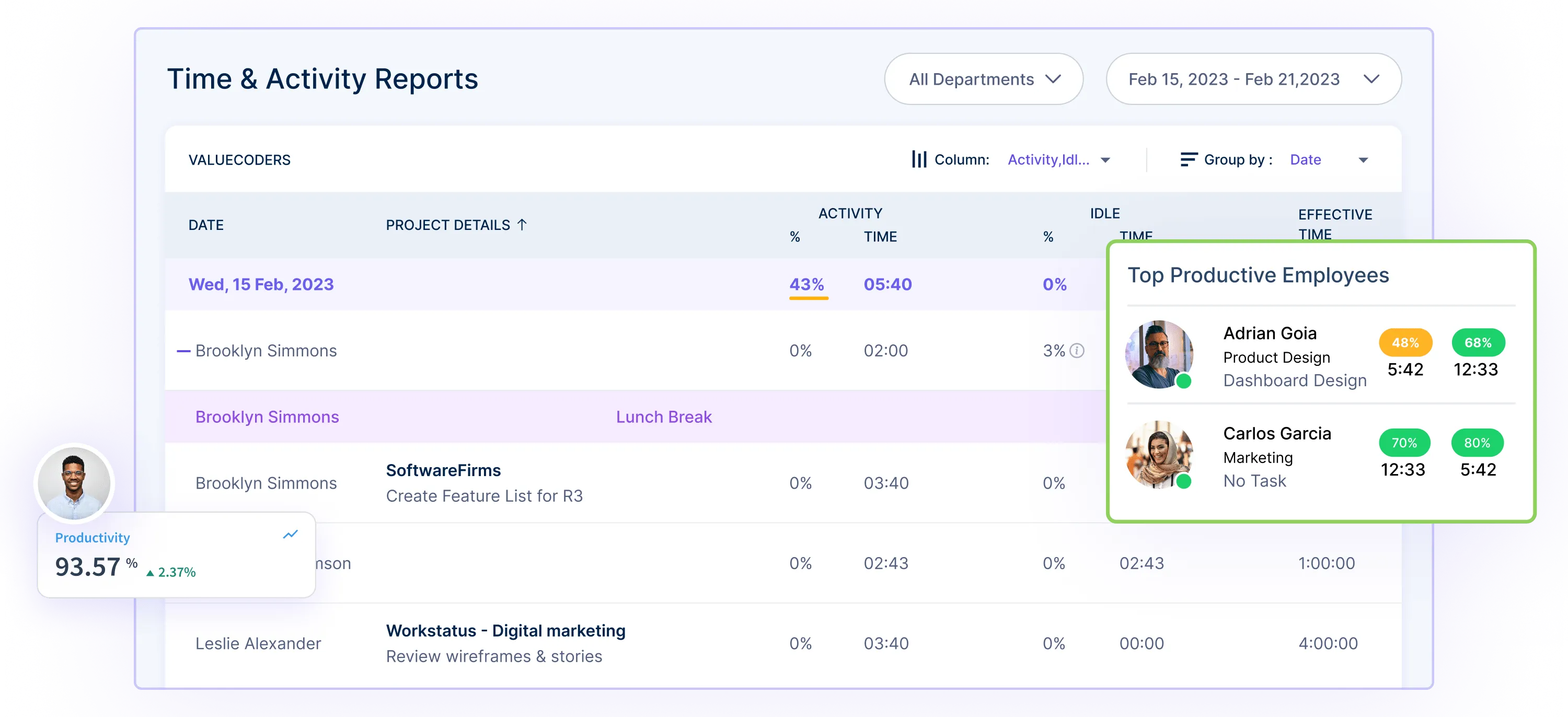
Workstatus seamlessly integrates with the Goal-Setting Quest by providing a platform for participants to track and manage their goals.
The tool allows individuals to set specific goals, allocate tasks, and establish deadlines.
2. Progress Monitoring
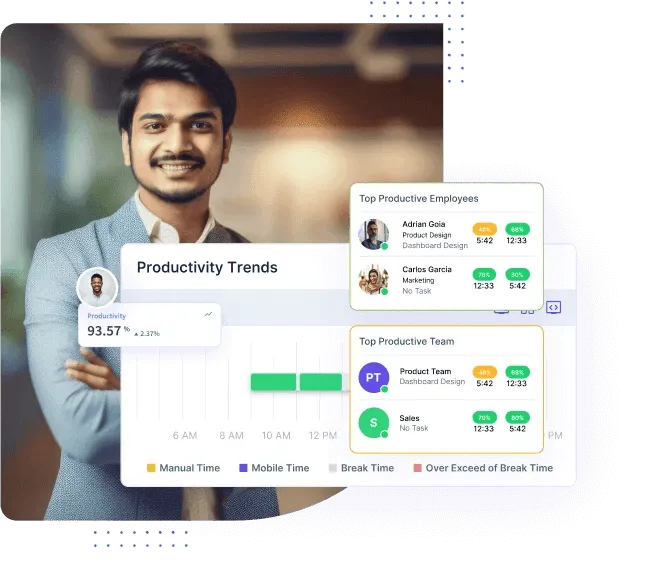 Workstatus enables real-time progress monitoring, allowing participants to track their advancement toward goal completion.
Workstatus enables real-time progress monitoring, allowing participants to track their advancement toward goal completion.
This feature adds transparency and accountability to the goal-setting process.
3. Reminders and Notifications
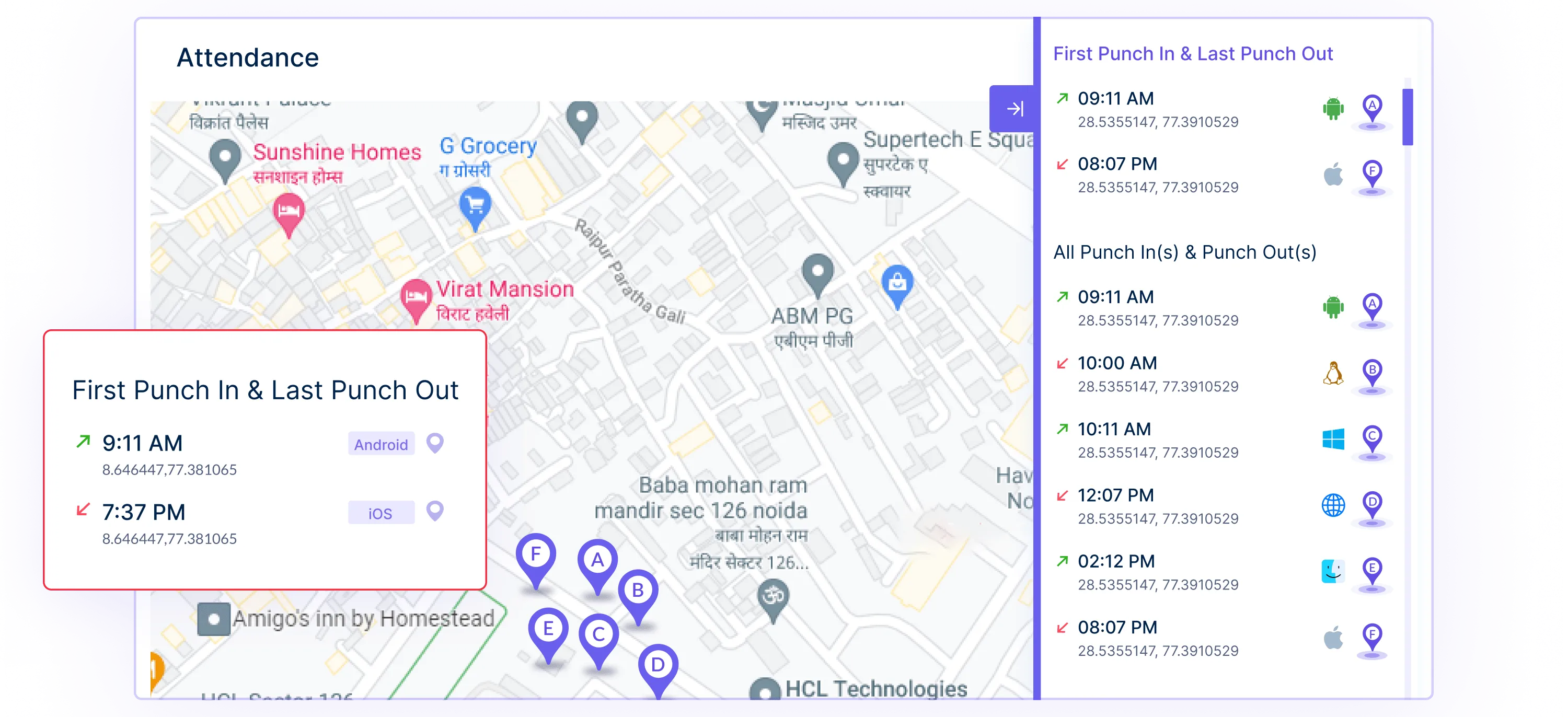
Workstatus includes reminders and notifications to keep participants informed about upcoming deadlines.
This ensures that goals remain at the participants’ attention, promoting consistent progress.
How Can Skills Learned be Applied at Workplace?
1. Time Management and Prioritization
In modern workplaces, gaming-honed time management skills empower employees to organize schedules, prioritize tasks, and navigate high-pressure situations, ensuring optimal productivity.
2. Team Collaboration and Communication
Multiplayer game skills translate seamlessly to collaborative projects, enhancing teamwork and communication for effective coordination on time-sensitive tasks, thereby boosting overall team efficiency.
3. Problem Solving and Critical Thinking
Gaming’s emphasis on quick thinking and strategic decision-making prepares employees for time-sensitive challenges, enabling swift analysis and decisive action for efficient problem resolution in the workplace.
Measuring the Impact of Games on Time Management Skills
1. Baseline Assessment
Establish a baseline for time management skills by assessing key indicators such as task completion times, time spent on specific activities, and overall productivity metrics. This provides a benchmark for comparison.
2. Implement Gamified Activities
Introduce the time management games within the workplace.
This could include activities like the Time Tracking Challenge, Task Prioritization Race, or any other gamified approach to improve time management skills.
3. Workstatus Integration
Ensure that Workstatus is seamlessly integrated into the gamified activities.
This involves setting up the tool to capture relevant data, including time tracking, application and website usage, and other pertinent metrics to time management.
4. Real-time Monitoring
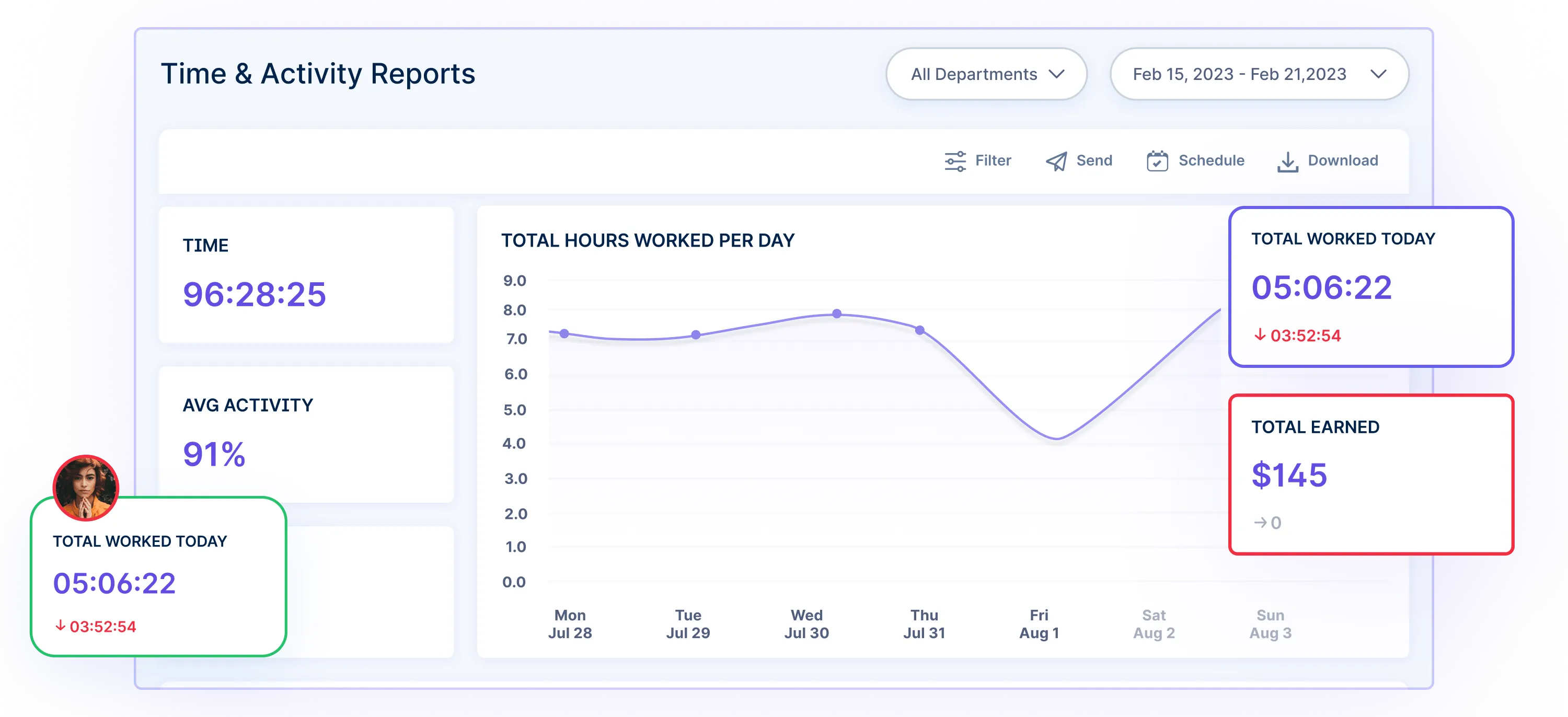
Leverage Workstatus’s real-time monitoring features to track participants’ activities during and after gamified sessions.
This provides immediate insights into time management behaviors, highlighting areas of strength and areas for improvement.
5. Performance Analytics
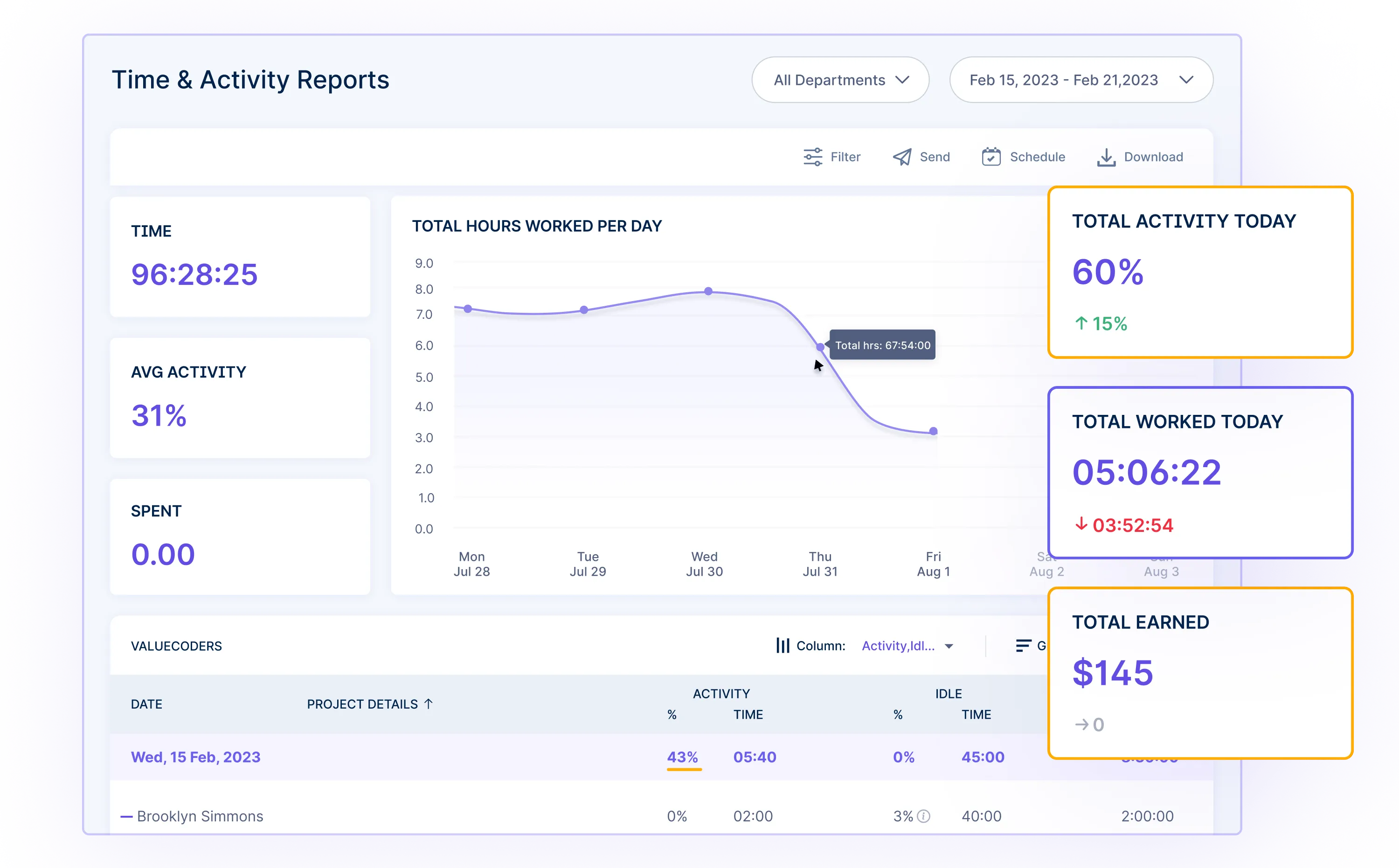
Use Workstatus reports to analyze performance analytics over specific periods.
Look for trends in time-related metrics, such as changes in task completion rates, variations in time spent on different activities, and overall productivity levels.
6. Comparative Analysis
Compare post-implementation metrics with the baseline assessment to identify any noticeable improvements or changes in time management skills.
This comparative analysis serves as a quantitative measure of the impact of the games on participants’ time management abilities.
7. Feedback and Surveys
Gather qualitative insights through participant feedback and surveys.
This can provide a more holistic understanding of the impact of gamified activities on perceived time management improvements.
8. Post-Game Skill Assessment
Conduct a post-game skill assessment using Workstatus reports to gauge participants’ time management skills.
Look for indicators such as increased time-tracking accuracy, more efficient task prioritization, and enhanced overall productivity.
Real-world examples
- Domino’s Pizza
549549
Domino’s Pizza has incorporated gamification to train its employees to craft pizzas swiftly and proficiently.
The company developed a virtual game called “Pizza Hero,” providing employees a platform to practice pizza-making skills.
The game incorporates a timer, motivating employees to enhance their speed and efficiency.
- Starbucks
6549649654
Starbucks has embraced gamification to instruct its staff on the swift and precise preparation of beverages.
The company designed a virtual game, “Starbucks Challenge,” enabling employees to hone their drink-making abilities.
The game integrates a timer, encouraging employees to focus on speed and accuracy in their tasks.
- Verizon
- 4+4+4+4
Verizon has implemented gamification to instill practical time management skills in its employees.
Through a game named “Mission: Possible,” employees can practice and refine their time management abilities in a virtual setting.
The game includes a timer, urging employees to enhance their efficiency and productivity.
Tips for fostering healthy competition and motivation in employees
1. Transparent Scoring System:
Tip
Establish a transparent scoring system that clearly outlines how points are earned and the criteria for success. Ensure that the scoring system is easily understandable and accessible to all participants.
Why
Transparency builds trust and fosters a fair competition environment. Employees are more motivated when they understand how their efforts contribute to the overall score and can track their progress effectivel
2. Peer-to-Peer Recognition
Tip
Encourage peer-to-peer recognition within the game environment. Create opportunities for participants to acknowledge and celebrate each other’s achievements, fostering a positive and collaborative atmosphere.
Why
Peer recognition enhances camaraderie and team spirit. It creates a supportive culture where employees feel motivated not only by individual success but also by the collective achievements of the team.
3. Recognition and Rewards
Tip
Implement a recognition and rewards system tied to game achievements. Acknowledge individuals or teams for reaching specific milestones, achieving high scores, or demonstrating exceptional time management skills.
Why
Recognition and rewards serve as powerful motivators. Employees are more likely to actively participate and strive for excellence when they know their efforts are acknowledged and appreciated.
Wrapping Up
Integrating engaging games into the workplace focused on time management cultivates essential skills and injects a sense of fun and competition into the professional sphere.
Using Workstatus as a comprehensive monitoring and analytics tool enhances the impact of these games by providing real-time insights and data-driven feedback.
Employees embracing these gamified approaches can refine their time management skills and contribute to a more productive and motivated work environment.





